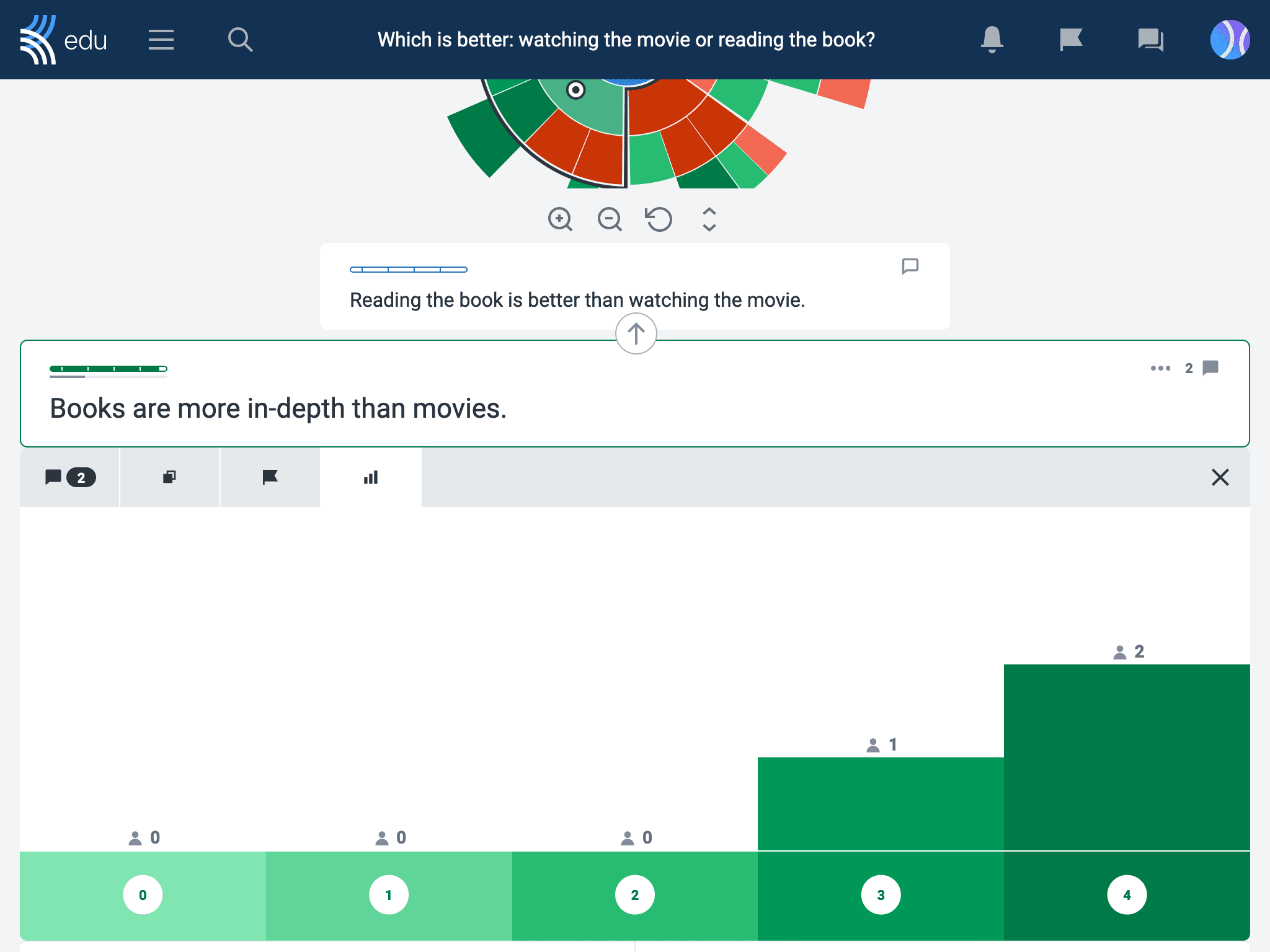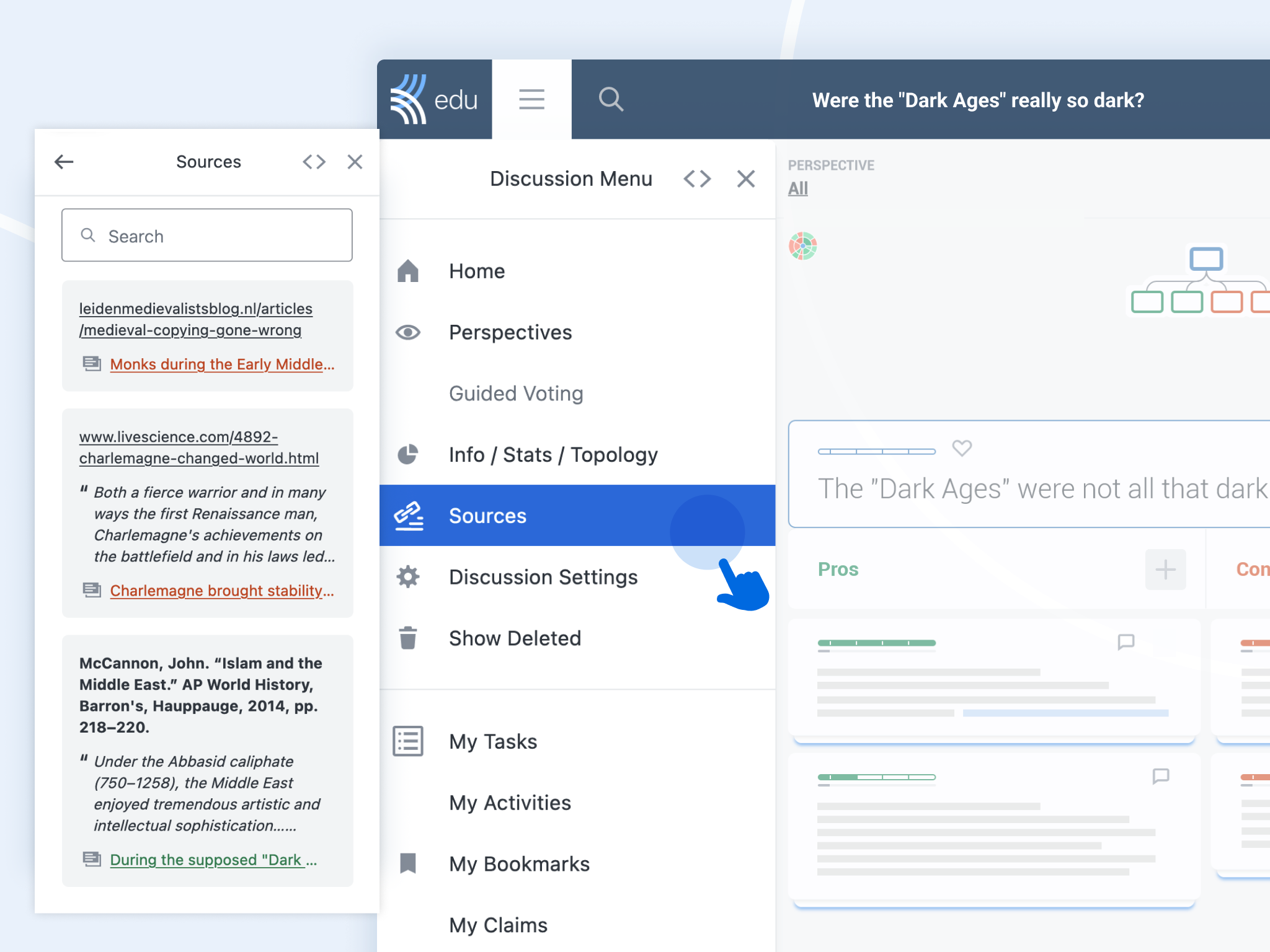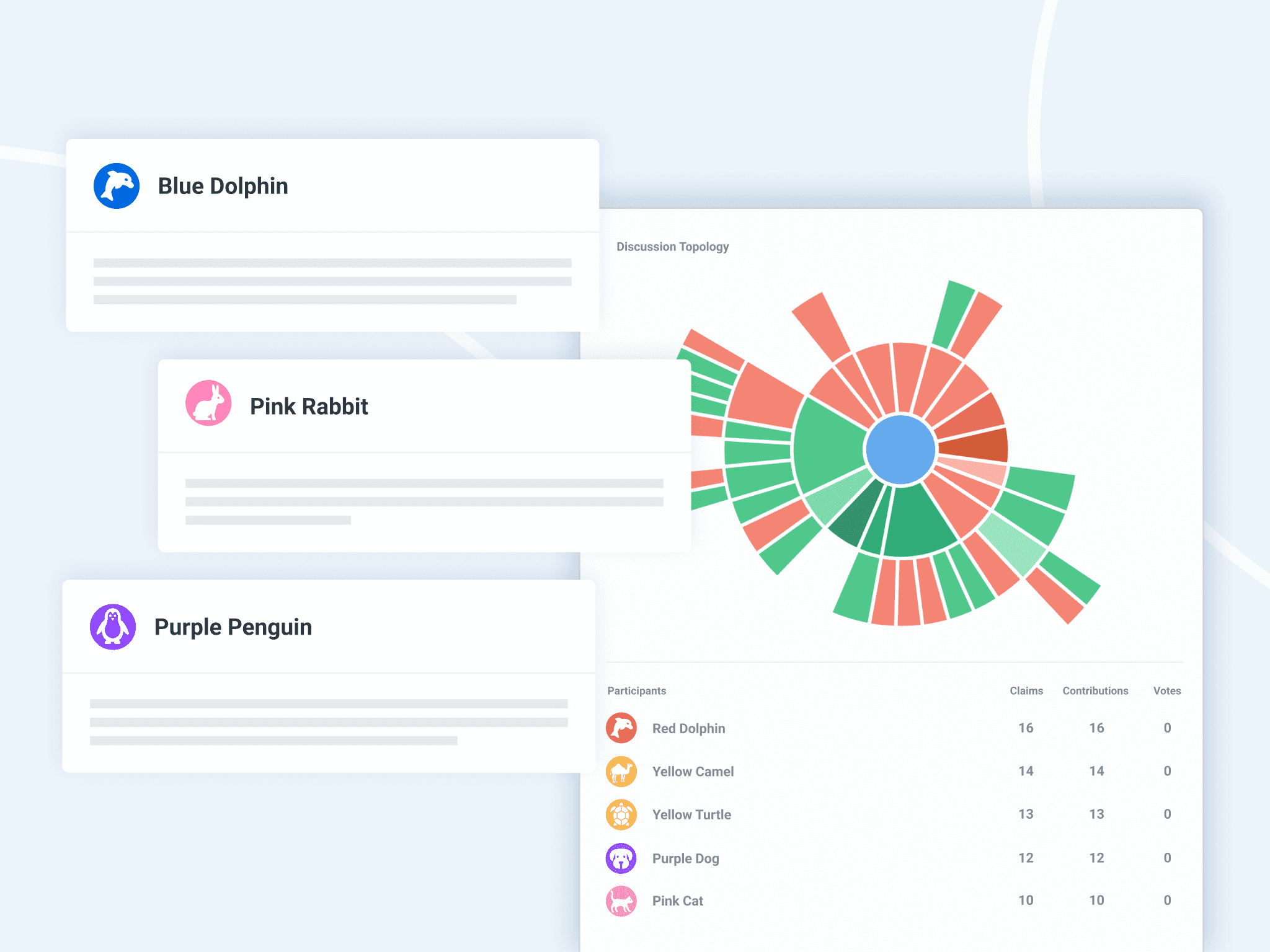For students to be discerning consumers of information, it’s vital that they can distinguish between statements of fact and statements of opinion. This skill is a cornerstone of media and information literacy.
Here’s a list of activities to help your students tell facts from opinions. Plus, explore how you can use classroom discussions on Kialo Edu to see these ideas in action!
1. Start with a fact or opinion greeting activity to practice identifying differences
Once students have a basic understanding of the difference between fact and opinion statements, test their knowledge with this greeting activity.
Prepare slides or sheets of paper with fact or opinion statements on them. As students enter one by one, ask them to identify whether each statement is a fact or an opinion. You can mix in some demonstrably false “facts” to emphasize that statements need to be verified!
You can also adapt this into a quick movement activity to break up the lesson — your students will reap the cognitive benefits of getting out of their seats. Using progressively more difficult statements, have the whole class perform an action to indicate either fact or opinion.
Standing up for facts and sitting down for opinions works just fine, but why not go a step further and have students brainstorm creative Total Physical Response (TPR) gestures to indicate their answers? Doing this activity in short bursts throughout the lesson can help wake up sleepy brains and restless bodies.
2. Play fact or opinion bingo to train recognizing facts vs. opinions
Educational games can increase motivation across age groups. This fun bingo activity has a competitive element to keep students engaged while they practice distinguishing between fact and opinion statements.
To prepare for this activity, compile a list of topics, drawing on curricular knowledge or previous examples from class. Create two statements for each topic: one fact and one opinion. Make sure you have at least enough statements to cover all the spaces on the bingo cards!
Next, have students fill out each bingo square with a topic category and either the word “Fact” or “Opinion.” To create a random sequence of squares for each student, you can use an online bingo card maker, or simply direct students to fill out the grid in a random order using the list of topics.
Then, read out either a fact or opinion statement about each topic. Students cross out the corresponding squares on their bingo cards, and the first student to get a line should call “bingo!”
As an extension, you can have students cut their bingo sheets into smaller cards for a group activity. They shuffle the cards, then take turns drawing cards and making fact or opinion statements as dictated by the topics. Add a timer to increase the fun!
3. Hold a scavenger hunt for a hands-on activity to practice identifying facts and opinions

If you want a hands-on, adventurous way to practice fact and opinion, why not hold a classroom scavenger hunt? Place curriculum-relevant facts on pieces of paper posted around the classroom, with a few carefully disguised opinions among them. Students can count or tick off the statements on a list, competing to find the opinions.
For a digital approach, do it on Kialo Edu! Populate a Kialo discussion with mostly factual claims, and a few hidden opinions. Ask students to explore the discussion, then comment or vote to identify the opinions.

To extend this activity, have students try to find supporting facts for the opinion statements, and add claims expressing opinions to the factual ones! You can also use this as the basis for an online debate activity.
4. Build literacy by analyzing a reading passage for facts and opinions

Outside of discrete classroom exercises, students are most likely to encounter text or speech that contains a jumble of facts and opinions mixed together.
Provide them with lots of opportunities to analyze passages that contain both. For students who need support, provide them ahead of time with the number of facts and opinions in the passage along with signal words to help them identify the statements.
Newspaper editorials and political speeches are both examples of kinds of text that contain a mix of facts and opinions, which provides good opportunities for comparative exercises.
For example, you can have students consider which political candidate relies more on facts or opinions in their address to voters. Or which of two newspaper editorials on the same issue contains more of each?
5. Role play in a discussion using facts and opinions
Classroom discussions and debates are a great way for students to put what they’ve learned about facts and opinions into practice. Remember to choose a topic that is interesting and relevant to students, and you can always check out our list of debate topics for inspiration!
To do this activity, divide your class into groups of two to three students for each side of a debate, and then give each group time to prepare their points. Direct them to use a particular structure for their arguments: For example, each opinion must be backed up by 2-3 facts.

As two groups present their arguments, those not debating should record every fact and opinion statement being presented. Guide the recorders to identify strong arguments (where the facts support the opinion) versus weaker ones. You can also point out how the same facts can be used to support different opinions.
You can adapt this activity into an online class discussion on Kialo Edu. Simply create a Kialo discussion for each group of students, and direct them to write a certain number of fact and opinion statements.
Then, either invite all students to each discussion or display it to the whole class so they can analyze the statements for themselves. You can always anonymize the discussion before presenting it to the class to focus attention on the content rather than who wrote it!

How have you been training your students to identify facts and opinions? If you tried one of these activities – or have one you think should be included in this list – reach out to us!

